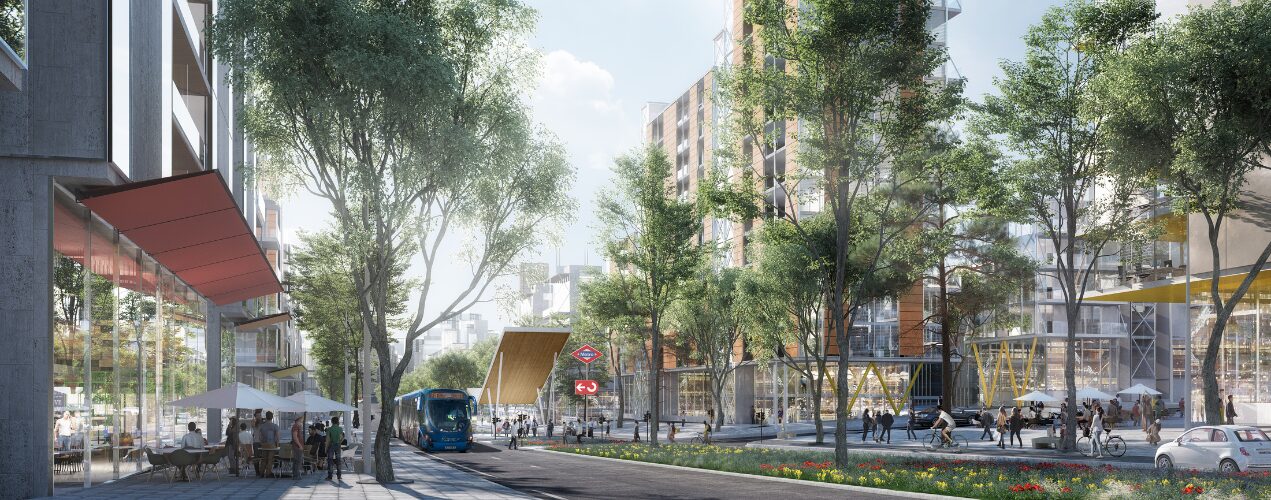9 April 2025
for Madrid Nuevo Norte

Madrid, 9 April 9 2025. The Management Committee of APE 08.20 Malmea-San Roque-Tres Olivos (MSRTO) has today submitted to the Madrid City Council the initiative for the execution of the area, which is a key milestone for the urban redevelopment of Madrid Nuevo Norte. This procedure officially launches the execution of the second of the four areas making up the overall project, after Las Tablas Oeste was the first to start the process and receive the initial approval for its urban development two weeks ago. The Central Business District and Chamartín Station project areas will be the next to begin their urban development management.
The presentation of the MSRTO initiative marks a critical step forward for the development of Madrid Nuevo Norte since, once it is assessed by the City Council, it will formally begin the processing of the rules and bylaws of the Owner’s Association and the construction process for the project area, whose definitive approvals will allow the start of the building construction works.
Belén Piserra, president of the Management Committee of the APE 08.20 Malmea-San Roque-Tres Olivos, remarked: “The submission of the MSRTO execution initiative serves as the clearest demonstration that Madrid Nuevo Norte is unstoppable, with two of its project areas fully engaged in urban management and the other two progressing towards commencing it as soon as possible.”
The Malmea-San Roque-Tres Olivos project area, with a surface area of 1,029,647 m2, has a total buildable gross area of 965,321 m2, of which 714,338 m2 are designated for residential use. This will allow for the construction of approximately 7,140 housing units, of which 27% (1,965) will be under the administration of the Madrid City Council for affordable housing policies.
Of the remaining buildable gross area, 214,864 m2 will be allocated for tertiary office use and 36,199 m2 for commercial use.
The project area will include 161,982 m2 dedicated to green space, primarily distributed along the so-called “green artery” of Madrid Nuevo Norte, which will complete the historic Prado-Recoletos-Castellana artery and connect it with the natural ecosystems of the Hills of El Pardo, in the Cuenca Alta del Manzanares Regional Park. It will form a network of interconnected parks which will provide continuity towards the inner city, towards both the future Madrid Metropolitan Forest and the regional green artery.
The project will also enhance the historical and cultural heritage of the neighbourhoods and pay homage to their agricultural and industrial past, with the incorporation of two historic chapels into the parks network: the 16th century San Roque chapel and the 19th century Nuestra Señora de Lourdes chapel will serve as the centrepieces of two parks situated along the green artery.
Calle Antonio de Cabezón, adjacent to the rail yards to the north of the M-30 highway, will be made green with spaces inspired by its historical agricultural use, paying homage to the heritage of this area of Madrid.
Likewise, public facilities covering an area of 137,030 m2 have been planned, which will make up for the historical deficiencies of these neighbourhoods. Located near the pre-established areas, they will be designed to meet the needs of both the future residents of Madrid Nuevo Norte and the people currently residing in the surrounding neighbourhoods.
The area will feature two impressive public transport hubs located to the north and south, each comprising a new metro station, commuter trains and several stops of the new bus rapid transit system, with a dedicated lane and traffic light priority. Both transport hubs will become the heart of their neighbourhoods, as more tertiary building space for office and commercial use has been planned around them in order to create lively surrounding environments.
Cycling mobility will be boosted by a new network of cycle paths through the project area, which will connect to the existing network, the Green Cycle Ring and the Colmenar cycle path.
The major infrastructure planned in the Malmea-San Roque-Tres Olivos project includes, notably, the relocation and complete renovation of Canal de Isabel II water supply infrastructure pipelines, through which most of the drinking water consumed in the city of Madrid flows. In total, over 12 kilometres of pipelines will be replaced in order to optimise the efficiency of water resources and improve the management of water consumption.
This project focuses on the urban edge of the historic quarter of Fuencarral and the neighbourhoods of Begoña and Tres Olivos, regenerating brownfields in disuse and ending the historical isolation of the area, with connections to the nearby neighbourhood of Las Tablas and the Chamartín Central Business District and thus solving mobility problems. This future neighbourhood will include numerous connections to the east: three bridges, a pedestrian footbridge and a tunnel will link Fuencarral with Las Tablas.
To the south, it will be connected to the Chamartín Central Business District via three bridges over the M-30 highway: two newly constructed ones on calle Agustín de Foxá and calle Antonio de Cabezón, as well the renovation and expansion of the existing bridge on Mauricio Legendre.